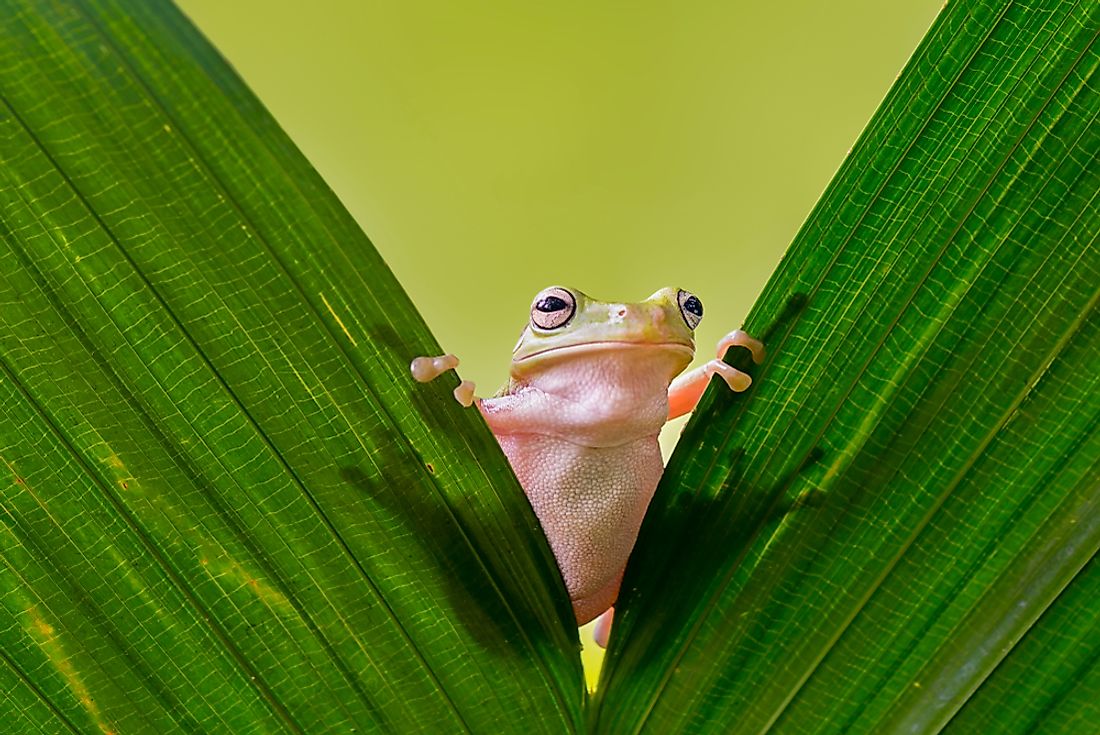Are Amphibians Reptiles?

All tetrapod vertebrates evolved from the lobe-finned fish. These lobe-finned fish had multi-jointed fins with digits that they used to crawl at the bottom of the sea. Some developed lungs that helped them breath when the swamps had low oxygen. The fins eventually evolved into limbs, and they became the ancestor of the tetrapods (mammals, birds, reptiles, and amphibians). The amphibian-like creatures evolved into two groups: the amphibians and the amniotes. The amniotes were further split into mammals and reptiles. Even though they are related and have numerous physical similarities, amphibians are not reptiles.
Similarities Between Amphibians and Reptiles
They are both ectothermic (cold-blooded) animals
The internal source of heat of the reptiles and amphibians is quite insignificant that they depend on external heat sources to maintain their body temperatures. Most reptiles regulate their temperatures by basking in the sun or look for shade when it’s too hot. When they are underwater, their body temperature is normally very close (or equal) to the temperature of the water.
They can both alter their skin color
Most reptiles and amphibians can alter their skin color by either dissipating or concentrating melanin. Changing their skin color helps them regulate their body temperature and hide from prey through camouflaging.
Other similarities
Both amphibians and reptiles have keen eyesight which helps them when hunting or detecting the animals that prey on them. They are both vertebrates that have a central vertebral column. When under attack the reptiles and amphibians use biting, camouflage and inflation of their bodies to avoid predation.
Differences Between Amphibians and Reptiles
Respiration
All reptiles’ breathe through their lungs except for the turtles who can respire while still underwater particularly during the cold season. Most amphibians breathe through their lungs and gills. Amphibians can exchange gases with the air or water through their skin (cutaneous respiration), but the surface of the amphibian’s skin should always be moist for oxygen to diffuse through at a high rate. Lungless salamanders respire through the tissues in their mouth and cutaneous means.
Reproduction
The eggs of the reptiles have an amnion which makes it possible for them to lay their eggs on land. They have hard or soft leathery eggs which some reptiles retain inside their bodies until they hatch while others lay them on the ground. The amphibians lay soft eggs in a damp media or water. The egg of an amphibian is made up of a yolk sac which is enveloped in numerous layers of jelly-like coverings. These eggs are permeable to gasses and water.
Metamorphosis
Most amphibians hatch into aquatic larvas which metamorphose into their adult-form after some few days. The larvae respire through their gills since their lungs are still developing. The reptiles do not have a larvae stage, and their young ones usually resemble the adults.
Skin
Most reptiles have scaly, dry and watertight skins with the exposed part of their bodies being covered by some bony scales. Amphibians have moist, rough or smooth skins which have some sticky mucous glands. These glands secrete a waterproof coating which helps keep the skin moist.











